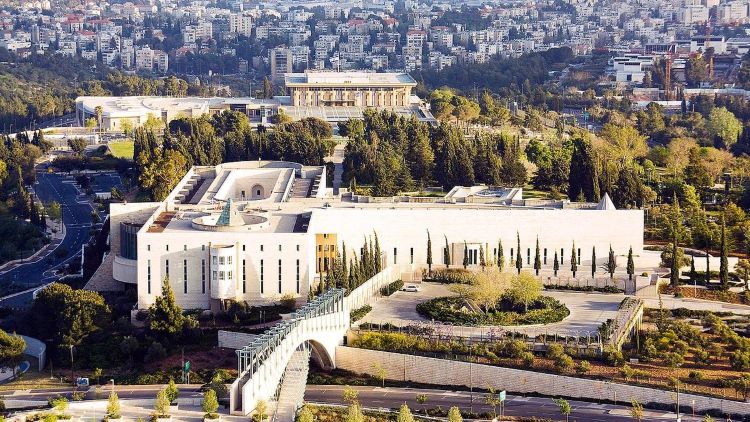Anamika Dey, editor
Brief news
- A ceasefire agreement between Israel and Hamas is set to take effect on Sunday, aimed at ending a 15-month conflict and facilitating the release of hostages and Palestinian detainees.
- The initial phase of the truce includes the release of 33 Israeli hostages in exchange for approximately 1,900 Palestinian prisoners, with specific conditions regarding the release and exile of certain detainees.
- Despite the ceasefire announcement, violence continues, with Israeli airstrikes and missile attacks from Yemen, while humanitarian aid efforts are ramping up to assist displaced Palestinians in Gaza.
Detailed news
On Saturday, the Qatari Ministry of Foreign Affairs announced that the ceasefire agreement between Israel and Hamas will be put into force in a little less twenty-four hours.
The ceasefire will begin on Sunday at 1:30 a.m. Eastern Time (0630 GMT or 8:30 a.m. local time), according to a post that was made by Qatar’s Minister of Foreign Affairs Majid al-Ansari on this website. He cautioned individuals to exercise caution when the agreement enters into effect and to wait for directives from officials for further instructions.
In the early hours of Saturday morning, the Israeli Cabinet gave its approval to a ceasefire agreement in Gaza. This agreement would result in the release of dozens of hostages and would also put an end to the 15-month war with Hamas. This would bring both sides one step closer to finishing their bloodiest and most destructive combat ever.
On Saturday, sirens could be heard throughout the central region of Israel, despite the declaration of a ceasefire. The Israeli army said that it had intercepted projectiles that were launched from Yemen. In recent weeks, the Houthis, who are supported by Iran, have increased the number of missile attacks they launch. As part of their attempt to exert pressure on Israel and the West on the conflict in Gaza, the group claims that the attacks are part of their campaign.
Israeli strikes into Gaza were also ongoing throughout this time period. According to the Palestinian Ministry of Health, there were at least 23 persons who lost their lives in the previous day.
It is planned that 33 captives will be released over the course of the next six weeks as part of the first phase of the truce. This will be in exchange for hundreds of Palestinians who are currently being held captive by Israel. It is planned that the other individuals, which will include male soldiers, will be released in a subsequent phase that will be discussed during the initial phase. It has been said by Hamas that it will not free the other hostages unless there is a permanent truce and a complete withdrawal of Israeli forces.
The exchange is scheduled to start on Sunday at four o’clock local time (1400 GMT), as stipulated by the ceasefire plan, which has been authorized by the Cabinet and signed by Israel’s national security adviser. In the course of each exchange, Israel will release inmates once the hostages have arrived without incident.
During the first part of the proposal, around 1,900 Palestinian inmates are scheduled to be released in return for 33 Israeli hostages, comprising both living and deceased individuals. One thousand and seventeen inmates are citizens of Gaza who were detained by Israel but were not participating in the events that occurred on October 7. Women and children under the age of 19 who are currently being imprisoned by Israel in Gaza will be released during this phase.
Every single Palestinian prisoner who was found guilty of carrying out attacks that resulted in fatalities will be exiled, either to Gaza or to another country, and they will not be allowed to return to Israel or the West Bank. According to the plan, some would be exiled for a period of three years, while others will be exiled permanently.
However, there are still important issues regarding the truce, which is the second one that has been negotiated during the war. These questions include the names of the 33 hostages who are going to be released and who may still be alive among them.
Three female hostages will be released on Day 1 of the agreement, four will be released on Day 7 of the agreement, and the rest 26 will be released throughout the course of the next five weeks.
The release of Palestinian detainees is also scheduled to take place. It was announced by Israel’s Ministry of Justice that the release of more than 700 individuals who are scheduled to be released as part of the first phase of the agreement will not take place until four o’clock on Sunday afternoon local time. On the list, every single person is either younger or a girl.
Additionally, during the first phase, Israeli troops are to withdraw into a buffer zone that is approximately one kilometer (0.6 miles) wide within Gaza, along the borders of Gaza with Israel.
In this way, Palestinians who have been displaced will be able to return to their homes, especially those in Gaza City and the northern part of Gaza. Palestinians are yearning to return to their homes, despite the fact that many of their homes have been destroyed or severely damaged as a result of Israel’s campaign into Gaza. The majority of Gaza’s population has been forced into enormous tent camps that are filthy.
The land that has been largely devastated ought to also witness an increase in the amount of humanitarian help. On Friday, relief trucks lined up on the Egyptian side of the Rafah border crossing into Gaza. These trucks were delivering medical supplies. According to the health ministry, two Egyptian government ministers arrived in the northern Sinai Peninsula on Saturday. Their purpose was to monitor the preparations for the delivery of aid and to receive the evacuation of patients who had been injured.
On October 7, 2023, Hamas launched a cross-border incursion into Israel, which resulted in the deaths of over 1,200 people and the capture of approximately 250 others. This strike kicked off the conflict. About one hundred hostages are still held in Gaza.
According to local health experts, Israel’s response was a catastrophic offensive that resulted in the deaths of about 46,000 Palestinians. These officials do not differentiate between civilians and terrorists, but they do indicate that women and children make up more than half of the fatalities.
Source : CNBC news




